Carmen Ansaldo – 20 January, 2015
In his essay, Tanizaki identified darkness and shadow as dominant qualities that characterised the Japanese aesthetic. He believed that the quality of darkness evoked an appreciation of the subtle and the historical, and set this appreciation against the perceived Western emphasis on lightness and brilliance, which valued only the spectacular instantaneousness of modernity.
Brisbane
Contemporary garment design
Future Beauty: 30 Years of Japanese Fashion
1 November 2014 - 15 February 2015
“And there may be some who argue that if beauty has to hide its weak points in the dark it is not beauty at all. But we Orientals, as I have suggested before, create a kind of beauty of the shadows we have made in out-of-the-way places… we find beauty not in the thing itself but in the patterns of shadows, the light and the darkness, the one thing against another creates.”
Jun’ichirō Tanizaki In Praise of Shadows (1933)
Future Beauty: 30 Years of Japanese Fashion is now well into its exhibition lifespan at Brisbane’s Gallery of Modern Art and has been met by an overwhelmingly positive reception from art and fashion enthusiasts alike. The exhibition counts almost 100 items on display and has enjoyed a comprehensive touring circuit spanning Germany to Japan to the United States, finally arriving in Australia four years after its debut at London’s Barbican Gallery in 2010. The international popularity of Future Beauty is indicative of a developing interest throughout many Western countries in the fabrication, artistic lineage and conceptual development of modern Japanese fashion designers.
Curator Akiko Fukai, director of the Kyoto Costume Institute in Japan, has capitalised on this recent interest by using Future Beauty as her opportunity to educate Western audiences on the influences that have characterised Japanese fashion design from the 80s to the present.
To this end, Fukai divides the exhibition into four unique themes - ‘In Praise of Shadows’, ‘Flatness’, ‘Tradition and Innovation’ and ‘Cool Japan’. Signature pieces by three of Japan’s most established designers-Issey Miyake, Rei Kawakubo of Comme des Garçons, and Yohji Yamamoto-are offered as emblems of the exhibition’s themes, as are items from younger and more contemporary designers such as Junya Watanabe, Jun Takahashi, Tao Kurihara and the Australian designer Akira Isogawa. Fukai’s unusual thematic organisation is simultaneously sympathetic to those of us who are less fashion-literate, yet establishes in no ambiguous terms the status of these items as nothing less than a high art form.
The viewer’s acceptance of Future Beauty as high art is effortless, as Fukai’s thematic categories draw clear parallels between the items exhibited and formalist qualities of sculpture and painting, such as line, structure, gesture and negative space. While utilising this art historical language, Fukai goes to great lengths to ensure that the works on display are seen in their own definitively Japanese context, rather than as functioning in a relationship of influence with Western designers. This distancing from dominant Western aesthetic values is clearly established by the text that introduces the exhibition: ‘In Praise of Shadows’, taken from a 1933 essay of the same name by the poet Jun’ichirō Tanizaki.
In his essay, Tanizaki identified darkness and shadow as dominant qualities that characterised the Japanese aesthetic. He believed that the quality of darkness evoked an appreciation of the subtle and the historical, and set this appreciation against the perceived Western emphasis on lightness and brilliance, which valued only the spectacular instantaneousness of modernity. Tanizaki’s writings were of significant influence to Japanese designers of the 80s and 90s, coupled with other more geographical inspirations, namely the post-apocalyptic landscapes of post-WWII Japan. These influences saw many designers conceptualising the body in androgynous terms that rejected the Western style of tailoring that worked towards the creation of an exaggerated, affluent and chromatic vision of femininity.
‘Flatness’ and ‘Tradition and Innovation’ pursue this unique take on the feminine silhouette through the inclusion of ready-to-wear dresses that unfold from flat origami-inspired patterns, or the similarly themed but technically intricate evening dresses of Wantanabe and Hiroaki Ohya.
Kawakubo’s conceptual costumes are some of the most notable inclusions in this regard, as her redefinition of the female silhouette through attached bulges and extensions purposely works against the body’s contours, and was unprecedented in fashion design. Perhaps the only disruption to the flow of Fukai’s curation is the ‘Cool Japan’ section. While the pieces in ‘Cool Japan’ represent a significant slice of Japanese fashion history, they seem to lose all impact when removed from the native context of street fashion; the Harajuku style is not done justice installed on the sterile surface of the art gallery floor.
Fukai succeeds in articulating not just the canon, but also the feel and philosophy, of modern Japanese fashion history. The viewer leaves Future Beauty with a lucid and open-minded conception of Japanese design in- and for-itself, rather than a more limited, simple affirmation of its influence on Western fashion houses. This exhibition provides a compelling argument for the assimilation of fashion as a valuable and equal part of major gallery collections.
Carmen Ansaldo
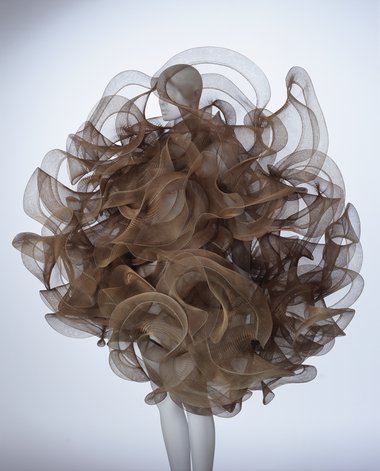



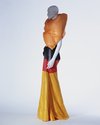








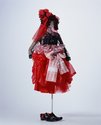





 Two Rooms presents a program of residencies and projects
Two Rooms presents a program of residencies and projects Advertising in this column
Advertising in this column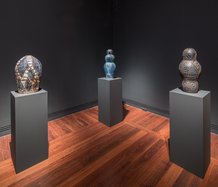

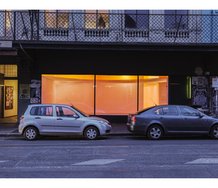

This Discussion has 0 comments.
Comment
Participate
Register to Participate.
Sign in
Sign in to an existing account.